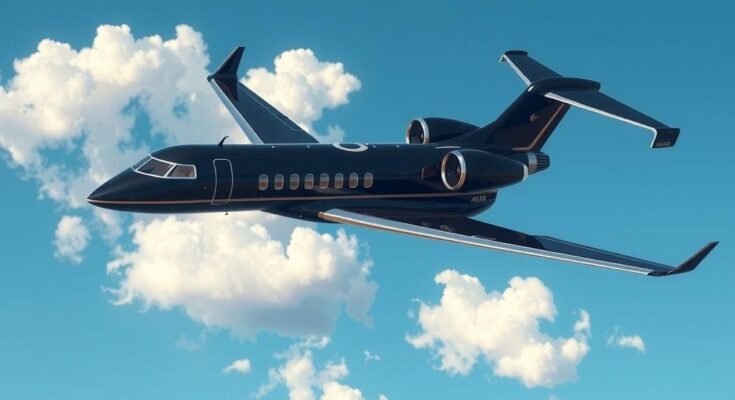President Trump aims to use a Qatari jet as Air Force One but faces challenges concerning necessary security modifications and costs. Air Force Secretary noted potential expenses of retrofitting, with debates over how far standards can be waived. Legislators warn against rushing the project without ensuring the aircraft can handle potential threats.
President Donald Trump has expressed a desire to fly on an upgraded version of Air Force One, possibly a luxury jet from the Qatari royal family. However, doing so raises questions about whether security risks would be taken into account. As lawyers sort out the legalities of acquiring this aircraft, discussions are underway regarding the necessary modifications to ensure safety for the president.
The current Air Force One is a pair of heavily modified Boeing 747s, which underwent extensive security upgrades, including sophisticated communication systems and anti-missile measures. Air Force Secretary Troy Meink mentioned that retrofitting the Qatari jet could cost under $400 million, though he did not divulge specifics. On the other hand, there is concern that rushing the project to satisfy Trump’s wishes might mean skimping on some critical safety upgrades.
Given America’s national security landscape, Trump’s previous experience with assassination attempts underscores the potential dangers he faces. Despite his awareness of these threats, he has been known to keep his personal phone on hand, signaling some level of willingness to take risks with communications security. “We need it as Air Force One until the other ones are done,” he remarked, boasting about acquiring the jet at no cost.
The standards for Air Force One have evolved considerably since the first plane with that designation transported Franklin D. Roosevelt in 1945. The new 747 replacements are part of a project expected to cost $5.3 billion and may not even finish before Trump leaves office. According to a recent Freedom of Information Act report, critical requirements for the new jets center on survivability and reliable communications.
To browse credible parts, manufacturers have to factor in that older 747s are no longer in production, adding to challenges related to maintenance. For the Qatari jet, installing the necessary anti-jamming communication systems and protective measures against surveillance is crucial. Next to that, there should also be a focus on ensuring airborne durability and shielding from electromagnetic pulses and radiation, details only first discussed with Jeff James, a former Air Force secretary.
There is speculation about how far Trump will be willing to go to adapt the aircraft in terms of security. Some estimates for outfitting the Qatari plane to presidential specifications range up to $1.5 billion—only a U.S. official anonymously shared that Congress could cut costs by factoring existing designs into preparations for the new aircraft.
Rep. Joe Courtney pointed out that based on other project contracts, transforming the Qatari aircraft could total around $1 billion, encompassing updates on wiring—an extensive process that might require rebuilding from scratch. Ultimately, it is Trump, as commander in chief, who could potentially waive some of these stringent standards, although that decision could leave critical communications vulnerable in dire situations.
Worryingly, if any requirements are waived, James warned such decisions must remain confidential to avoid revealing vulnerabilities to adversaries. The president’s preferences in aesthetics could come into play, too. Trump has shown interest in a darker color scheme for the plane, reminiscent of his private aircraft, potentially causing a disconnect with the traditional Air Force One appearance.
As of now, Trump inspected the Qatari plane in February, and the aircraft itself requires routine maintenance appropriate for its complexity. Contrarily, some legislators deeply oppose this plan. Senator Tammy Duckworth commented the idea of using the Qatari jet without knowing it can withstand a nuclear attack is reckless, ultimately wasting taxpayer money. Meanwhile, Boeing’s progress in building the new Air Force One has faced severe delays that could prolong the timeline for getting additional aircraft ready—as documented in a recent Government Accountability Office report.
As discussions around this potential acquisition continue, the dynamic between national security and presidential preferences remains at the forefront. Given the current climate, it is uncertain how soon Trump will push to move forward with the project or what steps he may take to expedite it amid potential obstacles. “Things seem to get waived these days when the president wants it,” remarked James, summing up the high-stakes environment surrounding Air Force One discussions.
In summary, the prospect of refitting a Qatari jet to serve as Air Force One is fraught with complexity. Security modifications are paramount yet could incur significant costs and time delays. While Trump desires quick upgrades, concerns about potential corners cut for speed bring critical safety questions into focus. The interactions between legislative oversight, national security, and presidential preference will likely define the course ahead.
Original Source: www.thespec.com




